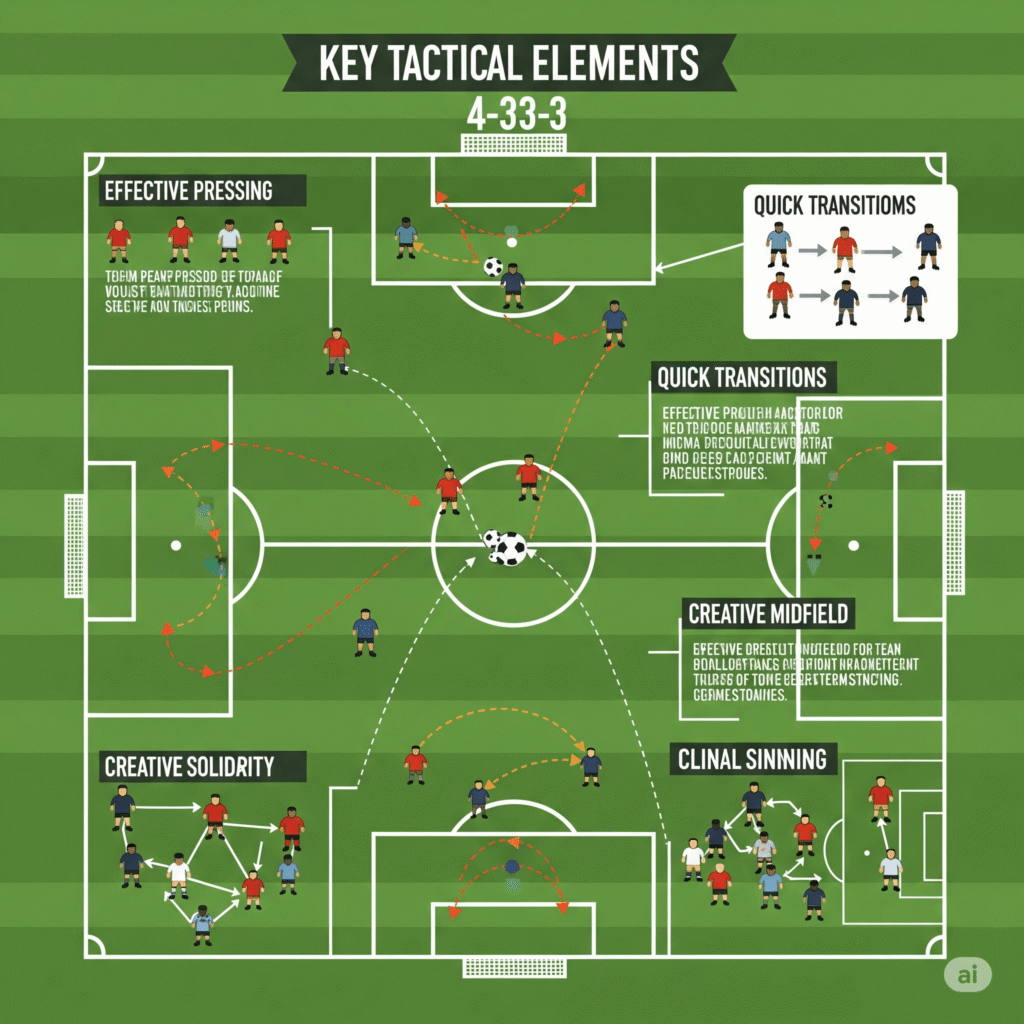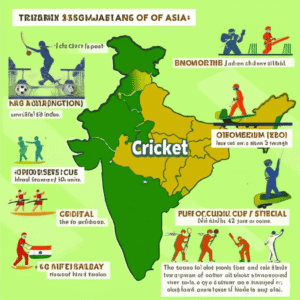Here’s a stat that’ll blow your mind: Leicester City’s 2015-16 Premier League triumph wasn’t just a fairy tale — it was tactical genius disguised as luck. While pundits called it a fluke, data analysts revealed something extraordinary: Leicester executed the perfect counter-attacking system with 89% precision in transition moments. They weren’t the most talented squad, but they were the most tactically disciplined. That season proved what coaches have known for decades: talent wins games, but tactics win championships. In modern football, where margins are razor-thin and every advantage matters, understanding tactical elements isn’t optional — it’s survival.
The forgotten art of pressing — why Manchester City’s suffocating style is reshaping modern football
Pressing isn’t just running at opponents like a pack of wolves. That’s chaos, not tactics. Real pressing is synchronized, intelligent, and absolutely ruthless. Pep Guardiola’s Manchester City press in coordinated waves, cutting off passing lanes while forcing opponents into predetermined traps. It’s chess at 100 mph.
The mathematics of successful pressing
Effective pressing requires geometric precision. Players must maintain specific distances — close enough to apply pressure, far enough to avoid being beaten by simple passes. The ideal pressing trigger occurs when opponents receive the ball with their back to goal or near the touchline. Data shows that teams recover possession within 40 meters of goal 73% more often when pressing is coordinated versus individual efforts.
Why most teams press wrong
Amateur teams press with emotion, not intelligence. They see the ball and charge like bulls seeing red. Professional teams press with calculated aggression. Liverpool under Klopp perfected “gegenpressing” — immediately winning the ball back after losing possession. But here’s the secret: they only press when they have numerical superiority or positional advantage. Otherwise, they drop into defensive shape.
The energy management paradox
Pressing is exhausting, but smart pressing actually conserves energy. When you win the ball higher up the pitch, you don’t need to cover as much ground attacking. Barcelona’s tiki-taka wasn’t just pretty passing — it was energy conservation through ball possession. The harder you press intelligently, the less you run overall.
Formation flexibility — how elite teams morph mid-game to exploit weaknesses
Formations aren’t rigid structures; they’re fluid concepts that shift based on game situations. Modern coaches use formations as starting points, not permanent blueprints. The best teams seamlessly transition between multiple formations within single matches, often without making substitutions.
The evolution from static to dynamic systems
Traditional 4-4-2 formations dominated football for decades because they were simple to understand and execute. But modern football demands complexity. Teams now employ asymmetric formations — different shapes in possession versus out of possession. Real Madrid might defend in a 4-4-2 but attack in a 3-2-4-1, with fullbacks pushing high and midfielders dropping deep.
Positional rotation that confuses opponents
Pep Guardiola popularized positional rotation — players switching roles during matches to create numerical advantages in different areas. A fullback might move into midfield while a midfielder drops into defense. This constant movement makes it impossible for opponents to man-mark effectively because player responsibilities constantly change.
In-game tactical switches that change everything
The greatest coaches make tactical adjustments that completely alter match dynamics. Sir Alex Ferguson’s halftime substitution of Teddy Sheringham for David Beckham in the 1999 Champions League final shifted Manchester United from 4-4-2 to 4-4-1-1, creating the attacking impetus for their miraculous comeback. These decisions require reading the game’s rhythm and having the courage to change what isn’t working.
The transition game revolution — dominating those crucial 5-second moments
Football matches are won and lost in transition moments — those 5-10 seconds after possession changes hands. Elite teams understand that transitional phases offer the best scoring opportunities because defensive structures are temporarily disorganized.
The transition game involves four distinct phases: losing possession, immediate reaction, reorganization, and counter-attack initiation. Teams that master these moments gain massive tactical advantages.
Offensive transition principles that create goals
- Immediate forward movement: Players closest to the ball sprint forward to exploit space
- Width creation: Outside players stretch the field to create passing lanes
- Central penetration: Midfielders drive through the middle to commit defenders
- Support play: Following players provide passing options and second balls
- Finishing instinct: Attackers anticipate crosses and through balls
- Quick decision-making: Minimizing touches to maintain attacking momentum
Liverpool’s front three excels in transition because they understand spacing, timing, and decision-making under pressure. Salah, Mané, and Firmino don’t just run fast — they run smart, creating triangles and overloads that defenders can’t match.
Defensive transition — stopping counter-attacks before they start
The first five seconds after losing possession are crucial. Teams must immediately shift from attacking to defensive mentality. The closest player to the ball applies pressure while teammates sprint back into defensive positions. Tactical fouls, while cynical, are sometimes necessary to prevent dangerous counter-attacks.
Set piece mastery — the hidden weapon that wins championships
Set pieces decide tight matches, yet most teams treat them as afterthoughts. Elite teams spend hours perfecting corner kicks, free kicks, and throw-ins because these situations offer controlled attacking opportunities against organized defenses.
The science of corner kick success
Corner kicks favor attacking teams because defenders must mark while moving, attackers can time their runs, and goalkeepers have limited vision. Successful corner routines involve multiple movements — blockers, runners, and late arrivals. The key is creating chaos in small spaces while maintaining organized attacking patterns.
Free kick innovation beyond dead ball specialists
Modern free kick tactics extend beyond having one player with a great shot. Teams now use multiple runners, dummy runs, and creative angles to create scoring chances. Manchester City’s free kick routines often involve 6-8 players in coordinated movements designed to create 1v1 situations in the penalty area.
Throw-in tactics — the overlooked opportunity
- Long throw specialists: Using players with exceptional throwing distance to create aerial threats
- Quick throw advantages: Restarting play before opponents can organize defensively
- Combination plays: Short throws that maintain possession while creating attacking build-up
Liverpool’s Trent Alexander-Arnold revolutionized throw-in tactics by treating them like corner kicks, delivering precise balls into dangerous areas that create immediate scoring threats.
Player roles versus positions — why Pep’s false 9 changed everything
Traditional football thinking assigns players fixed positions with specific responsibilities. Modern football uses fluid roles where player functions change based on game situations. This evolution has created more dynamic, unpredictable attacking play while making defending significantly more complex.
The false 9 revolution and its tactical implications
Pep Guardiola’s use of Lionel Messi as a false 9 at Barcelona revolutionized attacking football. Instead of playing as a traditional striker, Messi dropped deep into midfield, pulling center-backs out of position and creating space for Villa and Pedro to exploit. This simple positional change dismantled defensive systems worldwide and influenced tactical thinking for the next decade.
Modern fullback evolution
Today’s fullbacks are essentially wide midfielders who happen to start in defensive positions. Liverpool’s Andy Robertson and Trent Alexander-Arnold spend more time in attacking thirds than some traditional wingers. Their overlapping runs create width while central midfielders drift wide to maintain balance.
The box-to-box midfielder renaissance
Modern football has rediscovered the value of complete midfielders who can defend, distribute, and attack with equal effectiveness. Players like Kevin De Bruyne and N’Golo Kanté represent different archetypes of the same concept — midfielders whose influence extends across all phases of play.
Defensive compactness — the mathematical precision behind clean sheets
Defending isn’t just about individual duels; it’s about collective positioning, distance management, and space control. The best defensive teams maintain optimal distances between players while shifting as cohesive units to eliminate dangerous spaces.
Reading the game in real time — tactical adjustments that separate good from great
Great coaches don’t just prepare tactical plans; they adapt them continuously based on match developments. This requires pattern recognition, quick decision-making, and the ability to communicate changes effectively to players during live action. The best tactical minds see problems before they become crises and solutions before opponents recognize opportunities.



